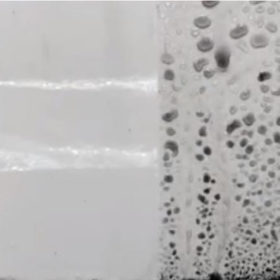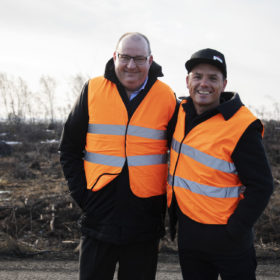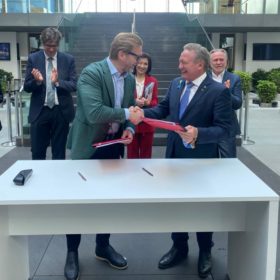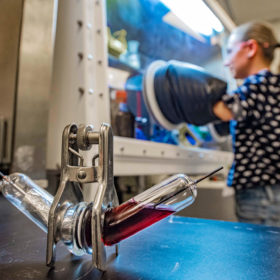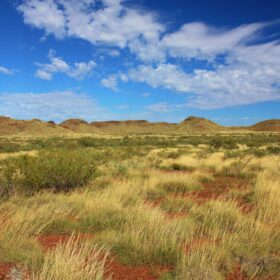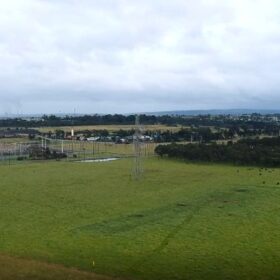Queensland company promises to turn noxious weeds into ‘green coal’
Queensland company Green Day Energy has begun trialling its proposition to convert the invasive weeds species, prickly acacia, to biomass for the purpose of generating electricity, biochar and hydrogen.
French consortium develops self-cleaning solar module coating
French chemical company Axcentive and solar module manufacturer Photowatt have developed a PV panel coating based on photoactive nanotechnology. The coating relies on a super-hydrophilic surface that makes the water spread out on the module surface immediately, thus avoiding light scattering effects upon rain.
Bifacial solar modules with 30% transparency rate for agrivoltaics, carports launched
Slovenian solar manufacturer Bisol is offering its new product with outputs of 260 and 300W, respectively. Front efficiencies ranges from 13.5% to 14.0% and the temperature coefficient is -0.35% per degree Celsius.
Enphase launches pilot to pay US solar customers for leasing batteries, sharing energy
Homeowners who participate in a new Enphase pilot project will connect their home batteries to the US grid, sharing energy through Green Mountain Power’s distribution system in exchange for financial incentives.
Infinite Blue Energy purchases WA solar farm to realise green hydrogen project by 2023
Western Australian company Infinite Blue Energy has today announced it will purchase Northam solar farm, which sits an hour east of Perth. The acquisition will accelerate the company’s green hydrogen project as it aims to produce up to 4.4 tonnes of renewable hydrogen daily from next year.
WA company recovering battery-grade vanadium from waste hailed by EU as on ‘cusp’ of major player status
A West Australian joint venture seeking to recover high-purity vanadium from a steel industry waste product using a carbon negative process has won the support of the European Union. “We’re not the first people to look at that project, but we’re the first people to look at it through a different lens and use this type of process,” Neometals’ General Manager of Commercial and Investor Relations, Jeremy McManus, told pv magazine Australia. The project, which is still in the early stages, is already been sought out by potential offtakers “desperate to secure green vanadium,” McManus added.
Fortescue to become Europe’s largest renewable hydrogen supplier with $50 billion deal
The deal between Fortescue Future Industries and E.ON, one of Europe’s largest energy network operators, will see the Australian company deliver five million tonnes of green hydrogen to Germany, the Netherlands and other European cities by 2030. “For us, it’s a minimum $50 billion expenditure. And that is one I welcome,” Fortescue founder Andrew Forrest said at press conference in Berlin overnight.
Woodside backs concentrated solar startup ahead of Australian tech push
Australian fossil fuels giant Woodside will invest in US-based concentrated solar startup Heliogen, supporting its construction of a full-scale concentrated solar thermal demonstration plant in California ahead of a push into Australia.
2.8GW green hydrogen project in the NT gains key approvals, expands solar potential by a third
Western Australian company Global Energy Ventures has had several permissions granted for its 2.8GW green hydrogen export project on the Tiwi Islands, off the coast of the Northern Territory, including potentially increasing the acreage for its proposed solar farm.
Discovery of ‘structural earthquake’ in cathode formation may improve sodium-ion batteries 20-40%
Researchers at the Argonne National Laboratory in the United States discovered a degenerative effect in the creation of cathode materials for sodium-ion batteries that may have significant impacts on the performance of sodium-ion batteries.

